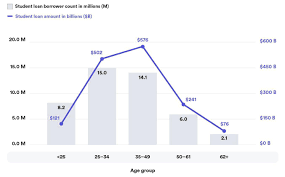
Introduction
The issue of student loans has become increasingly significant in the United Kingdom, with many graduates expressing concern over their financial futures. As tuition fees continue to rise, understanding student loans, repayment options, and recent changes in government policies is crucial for current and prospective students. In 2023, the conversations around student loans have taken centre stage, shaping the economic landscape and influencing educational pathways for many.
Current Status of Student Loans
As of 2023, student loans in the UK are primarily provided through the Student Loans Company (SLC). The maximum undergraduate tuition fee stands at £9,250 per year, prompting many students to rely on loans to finance their education. According to recent data, approximately 1.5 million students are enrolled in higher education, and nearly 50% of them are taking out loans to cover their tuition costs.
Repayment terms for these loans have seen recent revisions as the government aims to address concerns around ballooning debt. The current plan requires graduates to start repaying their loans when they earn over £27,295. The repayment rate is set at 9% of income above this threshold. However, with inflation and rising living costs, many graduates are finding it increasingly challenging to meet these requirements.
Government Initiatives and Changes
In response to growing public concern over student debt, the UK government has proposed several initiatives. These include potential changes to the student loan repayment system—some policymakers advocate for an increase in the repayment threshold, while others suggest lowering interest rates on loans to ease the burden on graduates.
Additionally, the introduction of the Enhanced Learning Credits Scheme aims to provide financial support to those seeking further education or training. This initiative could serve as a lifeline for many graduates who wish to upskill or switch careers in an evolving job market.
The Future of Student Loans
Looking ahead, it is predicted that the dialogue around student loans will continue to evolve. With ongoing discussions about access to higher education and financial sustainability, stakeholders, including students, universities, and government officials, must work collaboratively to create a framework that supports academic aspirations while managing financial realities.
Conclusion
As we navigate 2023, the landscape of student loans in the UK remains complex and multifaceted. It is essential for students to remain informed about their options and the government’s ongoing policies. With potential changes on the horizon, students and graduates must engage in discussions about their future financial responsibilities and advocate for a system that prioritises accessible education.
You may also like

The Impact of RB on Modern Banking

Understanding Loans: Impact and Importance in Today’s Economy
